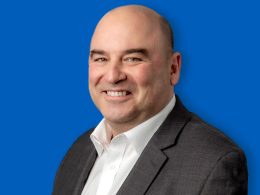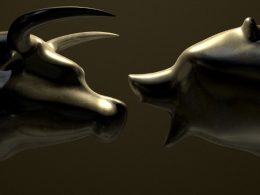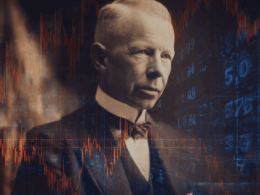When Doves Cry: Debates Rage About QE2's Finale
by Liz Ann Sonders, Senior Vice President, Chief Investment Strategist, Charles Schwab & Co., Inc.
April 4, 2011
Key Points
- Will the Federal Reserve's quantitative easing (QE2) pull into the dry dock in June as intended?
- If so, what are the implications for stock and bond investors?
- Might the Fed begin tightening policy before many think?
QE2—short for the Fed's second round of quantitative easing ($600 billion of US Treasury purchases)—is likely to end on schedule in June of this year. At the same time, the likelihood of QE3 is very low, which is a good thing in our opinion.
There are myriad debates raging today on the subject … about whether QE2 was successful, about whether QE3 is needed, about the impact of QE2's finale, and about long-run inflation implications of such unprecedented stimulus.
But lately, one of the more interesting debates to observe is actually among the Fed's Federal Open Market Committee (FOMC) members themselves.
Federal Open "Mouth" Committee
In an odd shift from the days of Alan Greenspan's Fed, when he basically held the lone microphone about policy, a bevy of regional Fed bank presidents have hit the interview circuit to share their individual views on QE2 and inflation.
According to The Wall Street Journal, 13 Fed officials have spoken publicly in the past two weeks in 23 public speeches all over the world. Several officials, including Minneapolis Fed President Narayana Kocherlakota, have given individual interviews to news organizations, adding up to hundreds of newswire headlines that have brought the debate to a full head of steam.
The most vocal Fed officials have been the inflation "hawks" who favor higher interest rates sooner to combat rising inflation expectations. We are in this camp, though it's not because we feel core inflation is at risk of spiking in the near-term (see our expert roundtable on inflation for our inflation views), but because it's no longer appropriate for the Fed to be administering a prescription for a patient (the economy) in triage, when that patient is now in recovery.
Kocherlakota surprised investors last Thursday by suggesting, in an interview with The Wall Street Journal, that the Fed might need to raise short-term interest rates this year, versus the consensus of early-to-mid 2012. He expects "a big upward movement" in core inflation from about 0.8% late last year to about 1.3% by year-end 2011.
As a result, he said it's "certainly possible" the Fed's target for short-term interest rates, now near zero, would be lifted by more than half a percentage point late this year. This is consistent with our view about the appropriate timing of the initial rate hike.
Also up to the mic last week was St. Louis Fed President James Bullard (not presently a voting member of the FOMC): "Because we are so accommodative right now, the FOMC may not be willing or able to wait until every single global uncertainty is resolved before we can begin normalizing policy."
He added: "If we wait too long we will get a lot of inflation in the United States and around the world."
His additional comment was music to our ears: "If the economy is as strong as I think and hope it will be in 2011, I think it will be time for us to start to reverse our ultra-aggressive and ultra-easy monetary policy." Bullard also said the Fed could stop $100 billion short of the $600 billion target for QE2.
Two other regional Fed presidents with votes on the FOMC, Richard Fisher of Dallas and Charles Plosser of Philadelphia, have expressed concerns about inflation and suggested they would favor raising rates in the near future.
Plosser noted that: "A stronger rebound in the economy or inflation than some now expect could require policy actions to be taken sooner and more aggressively than many observers seem to be anticipating."
He went on to make a comparison to the harrowing 1970s: "If we look back to the lessons of the 1970s, we see that it is not the price of oil that caused the Great Inflation, but a monetary policy stance that was too accommodative."
When doves cry
Several Fed officials took a more "dovish" stance though, in keeping with Fed Chair Ben Bernanke's public stance.
At the end of last week, New York Fed President William Dudley said: "Economic conditions have improved in the past year. Yet the recovery is still tenuous. And we are still far from the mark with regard to the Fed's dual mandate. In particular, the unemployment rate is much too high."
Dudley has become one of the key members of Fed Chairman Ben Bernanke's inner circle, along with Vice Chairwoman Janet Yellen. Sandra Pianalto, president of the Cleveland Fed and not presently a voting member of the FOMC, said last week that "several important factors will keep inflation in check."
QE2 into dry dock … uh oh?
Whether and when it's appropriate to tighten policy is not the only debate raging … the other is about whether QE2's end will tank the markets and/or economy. Those who believe that QE2 is solely to thank for the stock market rally and improved economy believe its demise will be a death knell for both.
Those (like us) who believe we are already in a self-sustaining economic expansion with corporate earnings growth underpinning the stock market believe we need to see an end to QE2 on schedule.
A refresher may be in order to set the stage. The Fed launched QE2 in November 2010, announcing the purchase of $600 billion of Treasury securities through June 2011. Since then, the Fed's holdings have increased by over $430 billion. These purchases have amounted to 90% of the net rise in publicly-held Treasury debt since last November.
If you add in the $35 billion bought by foreign central banks, official buying has represented 98% of the increase in debt. This means effectively that the private sector bought almost nothing … hence the concern about the Fed's absence as a buyer post-June.
Impact on yields
A primary concern is about the impact on Treasury yields. Remember, yields and prices move in the opposite direction, so with the absence of such a significant buyer, it's expected that prices could drop sharply, which would mean yields would rise equally sharply.
However, there are many factors that drive yields; certainly not just buying pressure by central banks. Remember, Treasury yields are actually higher today than they were when QE2 was launched (3.4% vs. 2.6% on the 10-year), so there were obviously other factors at play than Fed purchases.
Most important has been the improving economy, which has had a greater influence on the path of yields than Fed buying. Many (including the Fed) argue that yields would have risen even more without Fed interventions.
The Fed did a detailed study of the bond market impact of QE1, when the Fed purchased $300 billion of Treasuries between March and October 2009. The conclusion was that Treasury yields were lowered by 30 basis points across the yield curve, with a larger impact on 10-15 year maturities. The 10-year Treasury yield rose by about 0.75% over the period the Fed was buying. This also highlights the impact of underlying economic strength as the primary driver of bond yields.
In the chart below, you can see the path of yields throughout the QE1-QE2 period. Yields dropped sharply after QE1 was announced but rose equally sharply when it was expanded several months later.
When QE1 ended, yields actually dropped sharply, but there were other factors at play; notably the eruption of the euro-zone debt crisis and increased risk of a double-dip recession in the United States. As previously noted, since QE2 was telegraphed and announced, yields have generally trended higher.
Yields Over the QE Cycle
Click to enlarge
Source: FactSet and Federal Reserve, as of April 1, 2011.
A benign end to QE2?
The concern about the impact on yields as QE2 comes to a close is understandable. Our view is relatively benign, though, believing some of the increase in yields has been a function of inflation concerns related to the Fed's excess stimulus. If so, one could argue that ending QE2 on schedule might alleviate some of those inflation concerns, which could keep the rise in yields in check.
In addition, most big short-term market moves occur because of a shock to the system. The market doesn't tend to react to the well-known. The June timing of QE2's end has been known since day one, which should limit the shock factor.
Also important is that an end to QE2 doesn't mean the Fed becomes a seller of its Treasuries. The Fed has taken great pains to set up tools to allow it to drain reserves without having to sell large quantities of securities. These were put in place to allow the Fed to begin raising rates while maintaining a large balance sheet. We would expect the Fed to reduce its excess reserves by letting the balance sheet shrink by attrition (maturing securities).
We do believe yields are generally headed higher, but that's due to the optimistic assessment we have on the path for the economy. That's also why we believe the Fed will at least consider raising short-term rates by the end of this year. Even before that, we would expect the FOMC members to drop the "extended period" phrase in their statement that accompanies rate decisions.
This is what they did during the prior rate cycle in 2004. The comparable words in their statement at that time were "considerable period," describing the span over which rates would be kept low. They first used that phrase in August 2003. They subsequently changed that to "patient" in January 2004 and "measured" in May 2004. The first hike was a month later in June 2004.
The Japan effect
Adding fuel to the yield-pressure fire is the risk that Japanese investors may sell US Treasuries for repatriation reasons due to post-earthquake and tsunami rebuilding needs. According to Barclays Capital, though, demand from Japanese investors is unlikely to decline meaningfully because insurance companies have enough domestic liquid assets to cover losses.
While US debt will face competition from reconstruction-related financing needs in Japan, it's believed the savings rate in Japan should rise, as it did following the 1995 Kobe earthquake, providing an offset.
Moreover, the Japanese government will be very concerned about any strength in the yen and is likely to offset that by selling the yen and buying US dollars. Such an intervention typically leads to the Japanese Ministry of Finance buying US Treasuries.
Impact on stocks
The sell-off in the stock market after QE1 ended remains fresh in investors' minds, hence the nervousness about QE2's end.
But as ISI Group recently summarized, the flow of Treasury purchases should have, at most, a minor effect on financial markets. It's the total size of QE2 that is relevant, not the monthly pace at which it is carried out.
The Fed announced a removal of $600 billion from the Treasury supply last year and rational investors likely adjusted quickly to that information, independent of the pace at which the removal was going to be carried out.
Once the Fed stops its purchases, the total supply of Treasuries will still be short by $600 billion relative to where it otherwise would have been, and therefore investors will remain displaced into other asset classes, including US stocks.
And for those who fret the impact of rising yields on stocks, as I've highlighted in past reports and in this month's Market Snapshot, the correlation between yields and stock prices is presently high and positive (in other words, they've been moving in the same direction). It's not likely that stocks would come under significant pressure until we reach well over 4% on the 10-year Treasury yield.
Comparisons to 2004's cycle
Remember, the Fed has a dual mandate: stable prices (core inflation) and maximum employment (unemployment rate).
Today, core inflation is rising, albeit from an extremely low level; and the unemployment rate is falling.
In the last Fed tightening cycle in 2004, the core consumer price index (CPI) was still falling when the Fed began to telegraph its coming rate hikes. By the time the Fed hiked in June 2004, though, core CPI had begun to rise and was just under 2%, the Fed's unofficial "discomfort" level. Today, core CPI is up from its low, but remains well below 2%.
As for employment, in 2004, the unemployment rate had been falling for some time before the Fed began hiking rates; at which point it was about 5.6%. In this cycle, the unemployment rate peaked about 18 months ago, but at a very high level. It's now down to 8.8% thanks to a strong report last week, but clearly not yet at a level that's comfortable for the Fed.
The Fed's pickle
This is where today's environment gets tricky for the Fed. It's difficult for the Fed to serve both mandates presently, especially with sky-high commodity prices. US consumers now spend 22% of their income on food and gasoline, which is a multi-decade high.
But the unemployment rate also remains high; so were the Fed to react in the short-term to commodity inflation, it would make the situation for the consumer (and housing, of course) that much worse.
The Fed is certainly mindful of the perils of taking it too slowly when it comes to tightening. Most Fed economists believe that the slow and extremely predictable pace of hikes between 2004 and 2006 was a root cause of the housing and credit bubbles. With talk again of a bubble, this time in commodity prices, they may move swiftly and with larger hikes when the time comes.
But fears should be eased somewhat due to the healthier backdrop for the economy we're experiencing. As compared to the period when QE1 ended, inflation is edging higher rather than moving sharply lower. And, the unemployment rate is steadily falling, rather than stuck at a very high level.
We believe the side effects of taking the patient off its triage-based medication will be less dire than many believe.
Important Disclosures
The information provided here is for general informational purposes only and should not be considered an individualized recommendation or personalized investment advice. The investment strategies mentioned here may not be suitable for everyone. Each investor needs to review an investment strategy for his or her own particular situation before making any investment decision.
All expressions of opinion are subject to change without notice in reaction to shifting market conditions. Data contained herein from third party providers is obtained from what are considered reliable sources. However, its accuracy, completeness or reliability cannot be guaranteed.
Examples provided are for illustrative (or "informational") purposes only and not intended to be reflective of results you can expect to achieve.










